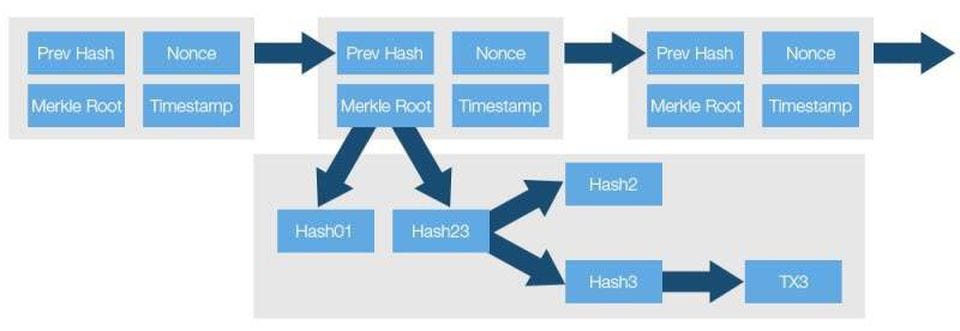Latest news about Bitcoin and all cryptocurrencies. Your daily crypto news habit.
In one of my previous articles, I spoke about a recently launched project which I see great value in — Cybervein.
While I explained in simple terms what the project does, i.e. create a city-wide database(blockchain) running thousands of other customized databases (side-chains), it did not justify enough the technical aspect of the project — the impressive DAG architecture.
For whatever reason, the project yet remains relatively unknown, but from the various forums and sub-reddits I explore, I see rising interest from tech circles.
Also — there’s some direct comparisons made to the current DAG favorites, Iota and Byteball, although I personally don’t find the three projects similar.
Rival comparisons are always good in the world of crypto, it shows that a project holds projects, and competitors communities are beginning to notice.
So, lets dive right in !
A reading of Cybervein’s whitepaper shows much happening in the project.
In any sense of the world, CV is definitely somewhat complicated to understand on the first reading, but subsequently it all makes sense, and only then does the reader fully understand the magnitude of this monstrosity blockchain project.
What also makes it different from competitor projects is the multi-mechanism use of sophisticated tech.
For one, the project uses a Proof of Contribution to validate blocks.
Two, transactions take place via the DAG structure, ensuring a vast amount of data processed every second, in a HIGHLY secure, complex consensus algorithm.
Third, what Ethereum is debating and trying to implement now i.e. Sharding, CV has it already done. Accessing multiple databases is possible ONLY using such a technique, which basically “breaks down” the network into “shards,” which are then treated as a distinct node each in addition to being congestion-resistant.
Similar to Stratis, which allows users to create their own ICOs in seconds, CV provides the tools to —
create your own smart contracts, virtual machine operating database and programming language, even consensus mechanism and innovation.
In short, CV is a universal network of decentralized databases.
What exactly is DAG and Why should You Care?
For those uninitiated, I sense that what ever I wrote above might have given rise to one major question — WTF is DAG ?
So in industry terms, Bitcoin is considered as blockchain 1.0.
It did the most basic stuff that a blockchain can do, i.e. validate and confirm transactions while noting it all down on a huge public ledger available for viewing by the world.
Then came Vitalik Buterin’s brainchild ( along with 19 other developers ), the open-source, decentralized ledger platform Ethereum.
Ethereum was built as a platform that allows applications to run exactly as programmed, with Buterin himself comparing the platform to an Android/iOS operating system that can run thousands of unrelated applications on it.
This was regarded as blockchain 2.0.
And now, in the year 2018, the rise of Iota led people to consider a Directed Cyclic Graph (DAG) system as blockchain 3.0.
IN fact, the DAG is so rad that in tech circle, it isn’t considered a traditional blockchain at all!
Sharding down the alphabets
Directed = the connections between the nodes (edges) have a direction.
Acyclic = “non-circular” = moving from node to node by following the edges, you will never encounter the same node for the second time.
Graph = structure consisting of nodes, that are connected to each other with edges.
The figure below shows a basic DAG structure :
Evidently, the only movement this beast makes is forwards, thus eliminating any instance of hacking, therefore being completely immutable.
DAG is best applied to problems related to data processing, scheduling, finding the best route in navigation, and data compression. i.e DAG is BEST suited for CV’s needs !
For a total ELI5 in one line —
A DAG is dots with lines pointing to other dots. Every dot is a specific data node.
How about an ELI18 ?
DAG is like bar-hopping where you can never go to the same bar twice.
How about an application specific example ?
Imagine an obstacle race .
The first hurdle is a climb a long sloping platform, and JUMP ! (DOT A)
Then there comes this (DOT B) :
Finally (DOT C)
If every obstacle was represented as a unique data point, it would require the transaction to first CLEAR Dot A, then move to B, and then C.
And since it’s a race in one direction. The runners NEVER go from C to B to A
DAG operates in a very similar manner. Just using super-complex data obstacles and much refined paths.
CV’s DAG
Now that you know how the basics of DAG, let’s view the concept from Cybervein’s perspective.
In theory, DAG is a blockless structure, yet, projects like IOTA, Byteball and CyberVein use the DAG with blocks instead of dots.
Due to its block-less nature, the transactions run directly into the DAG networks. The whole process is much faster than those of blockchains based on PoW and PoS.
This system immensely helps when dealing with side-chains, as the security, immutability, and speed of blocks is increased.
Adding to this, is CV’s use of smart contracts and IoT systems, which all in all create one huge futuristic ecosystem.
Furthermore, all systems are present on one underlying platform, as Cybervein uses its native language — ‘Vein’ — to bring into fruition cross-contract ecosystems, and well as cross-chain functioning.
All of this, makes the project much suited to its goals, and one step closer to creating the ultimate smart-city ecosystem.
P.s — I am no stakeholder of the project, but I write about projects I am deeply interested in.
P.P.S — Check out the project for yourself ?
- Web:www.cybervein.org
- WhitePaper : http://cybervein.org/whitepaper/cyberveinwhitepapersc.pdf
- Telegram : https://t.me/CyberVeinCommunity
How Cybervein Builds a Futuristic DAG Architecture was originally published in Hacker Noon on Medium, where people are continuing the conversation by highlighting and responding to this story.
Disclaimer
The views and opinions expressed in this article are solely those of the authors and do not reflect the views of Bitcoin Insider. Every investment and trading move involves risk - this is especially true for cryptocurrencies given their volatility. We strongly advise our readers to conduct their own research when making a decision.





